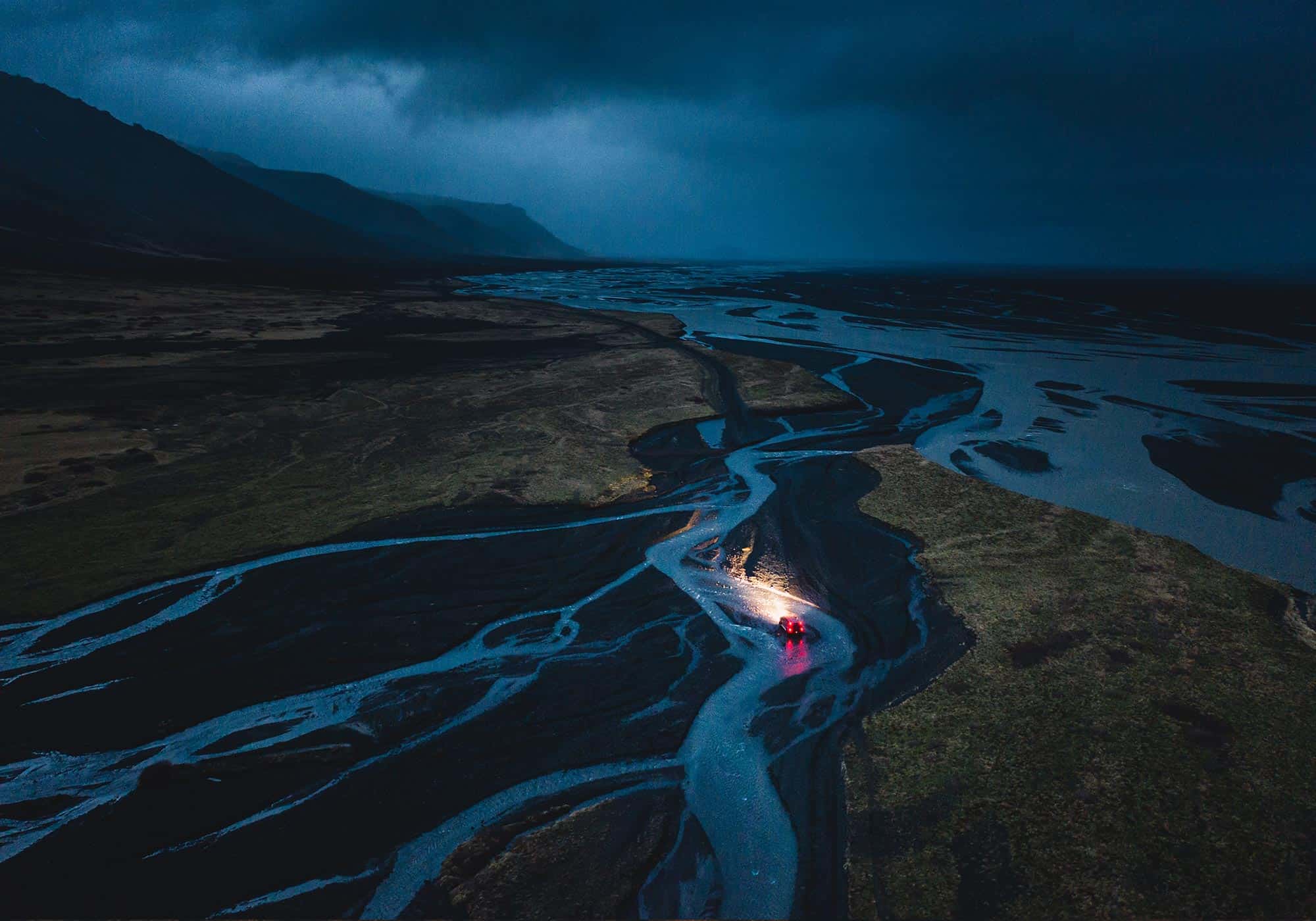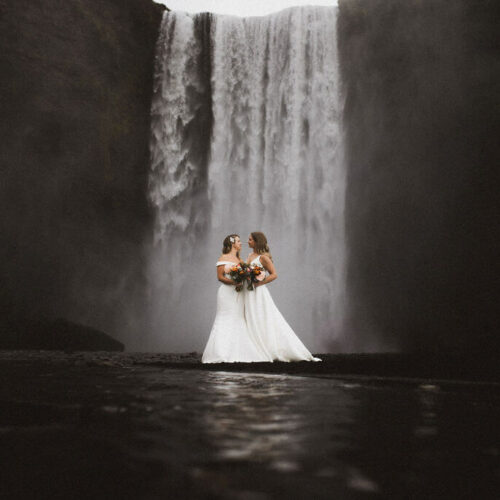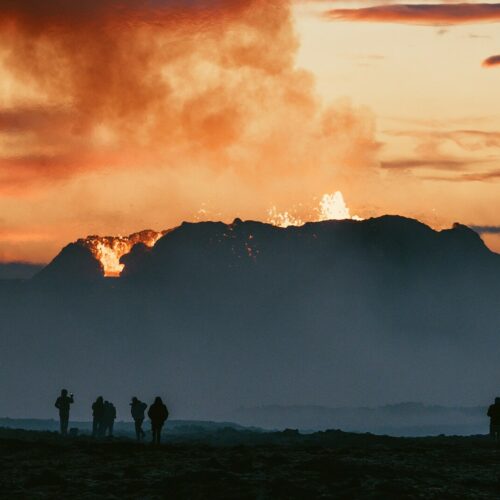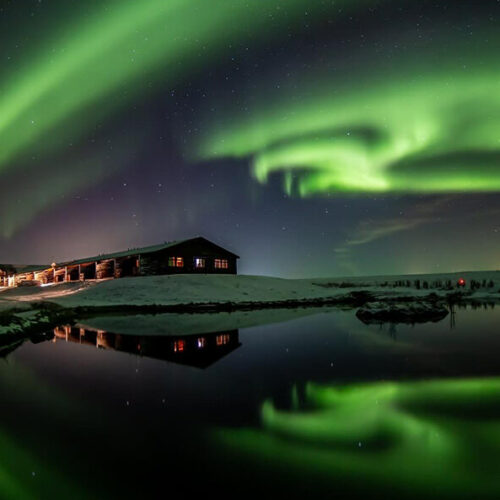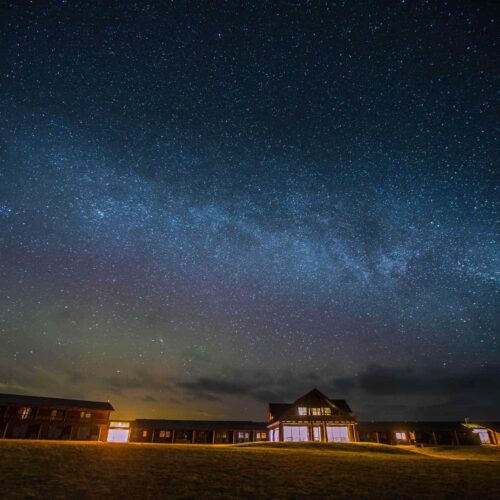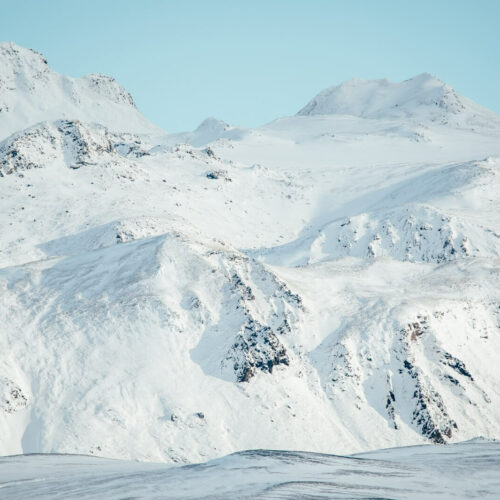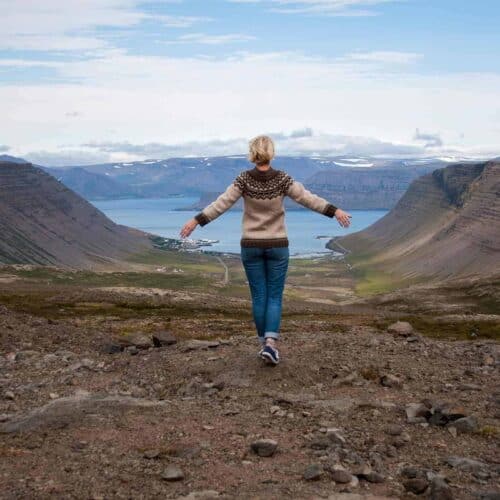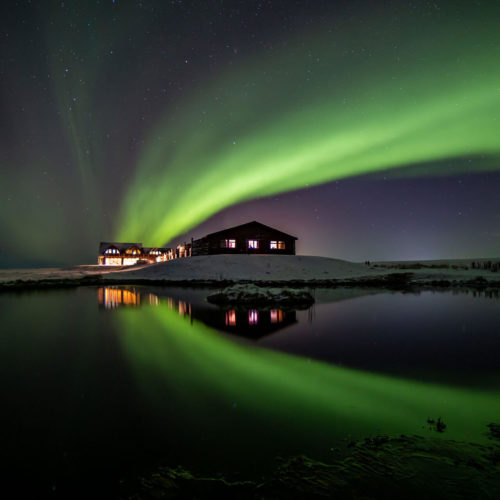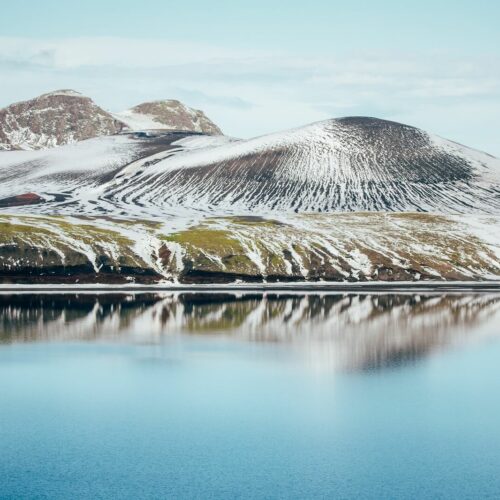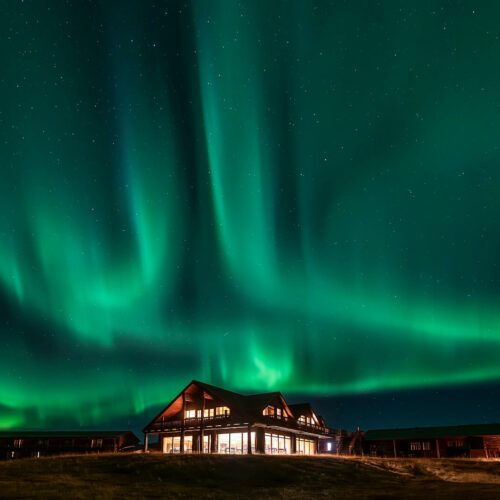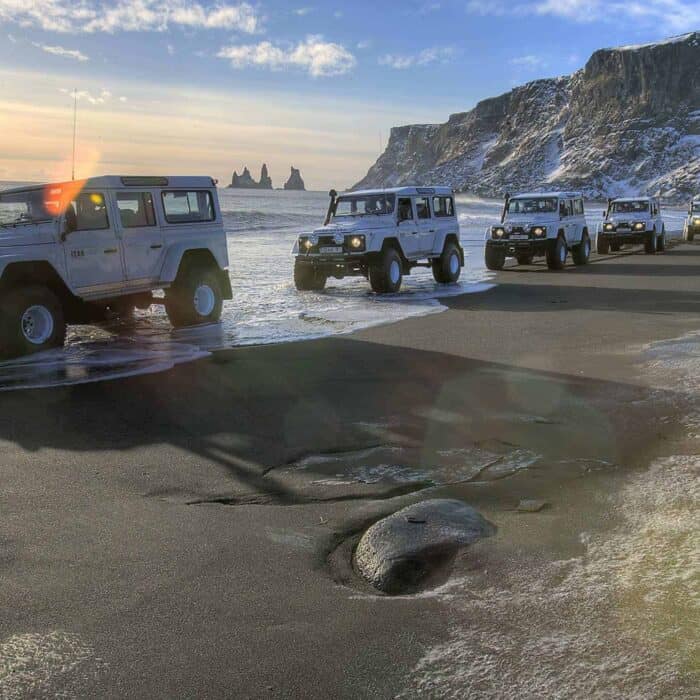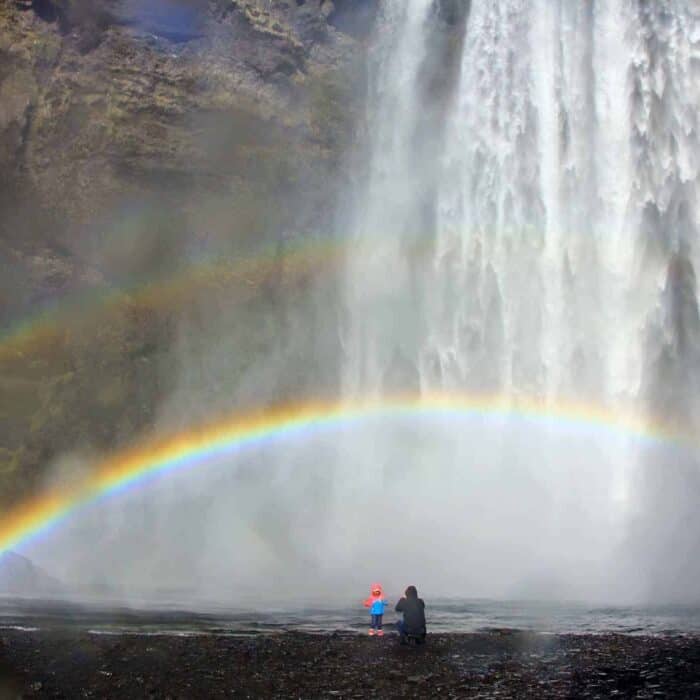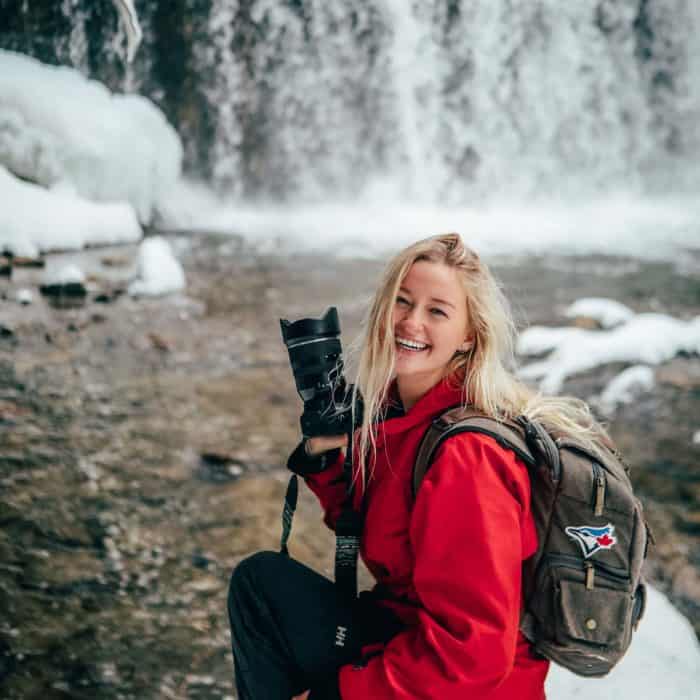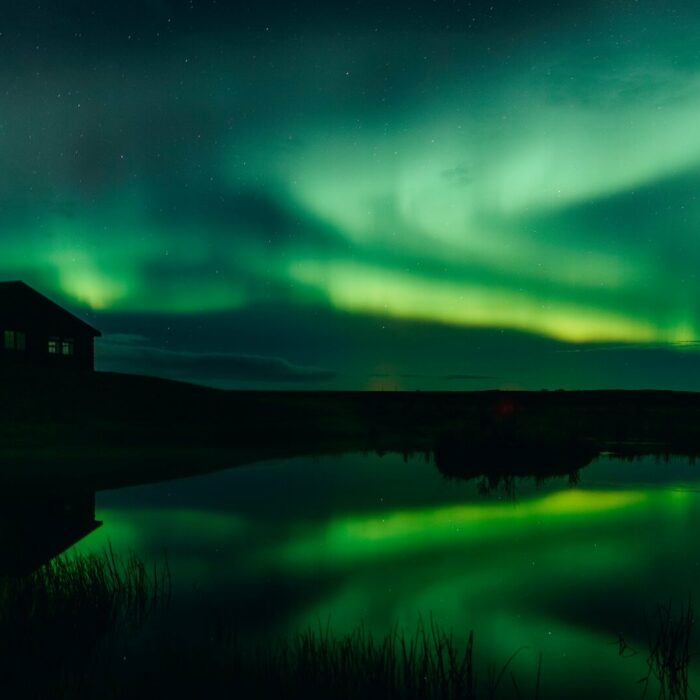Table of Contents
The hidden Icelandic highlands are a sight to be seen. These uninhabited spaces are filled with lava fields, waterfalls, mountains and so much more. Keep reading to learn about our top recommendations in the Icelandic highlands.
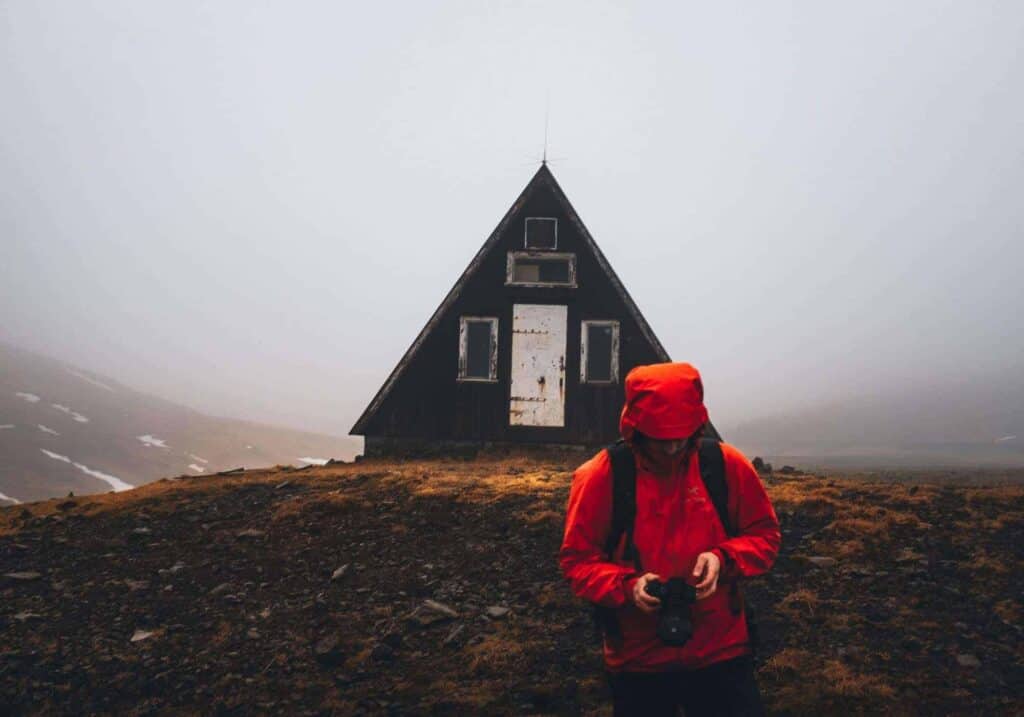
Dynkur
Dynkur is a waterfall that it is about 38 m high in the Þjórsá River, southeast below the Kóngsá River in the Flóamanna district. The river flows over many ledges as small falls that together make one system of waterfalls, but most important is the wondrous beauty and changeable rainbows that form so that it becomes an eruption of color over the falls when the sun shines. The people in the Holt area area call it Búðarháls Waterfall but those living in Gnúpver call it Dynkur (Thudding).

Eldgjá
Eldgjá is a spectacular series of eruption craters, about 70 km long. The area last erupted in about 934, just after the Norse settlement of Iceland. It is thought that the craters continue under the Mýrdals Glacier to meet Lake Lamba slightly west of Laki.
A great deal of lava has poured from Eldgjá to reach the sea at Alviðruhamar. The lava has been estimated as having covered a 700 km² swathe after the last ice age, the largest lava area in historical times anywhere on Earth. Eldgjá is thought to be part of the same volcanic system as Katla and is considered a true natural wonder. A walk up to Gjátindur is rewarded by a sweeping view over Eldgjá, all the way to Langasjó, Fjallabak and the Lakagígar craters.
Hnausapollur
Hnausapollur is a stunning blue lake nestled in a crater that formed about 1100 years ago in a short explosive eruption. It measures about 30 hectares and is one of those lakes in Iceland that are known by two names: Hnausapollur and Bláhylur.
It lies in a crater near Mt. Tjörvafell, just north of Frostastaðavatn lake, at an altitude of 570 metres. Hnausapollur looks a lot like its neighbor, Ljótipollur, but the access and drop from the edge of the crater down to the lake is considerably easier.
There are special brown trout in the lake, but they are small and few feel it worth clambering down to fish for them. A ring road skirts the crater edge and from there it is a quick walk to go up to the highest point for a still better view.
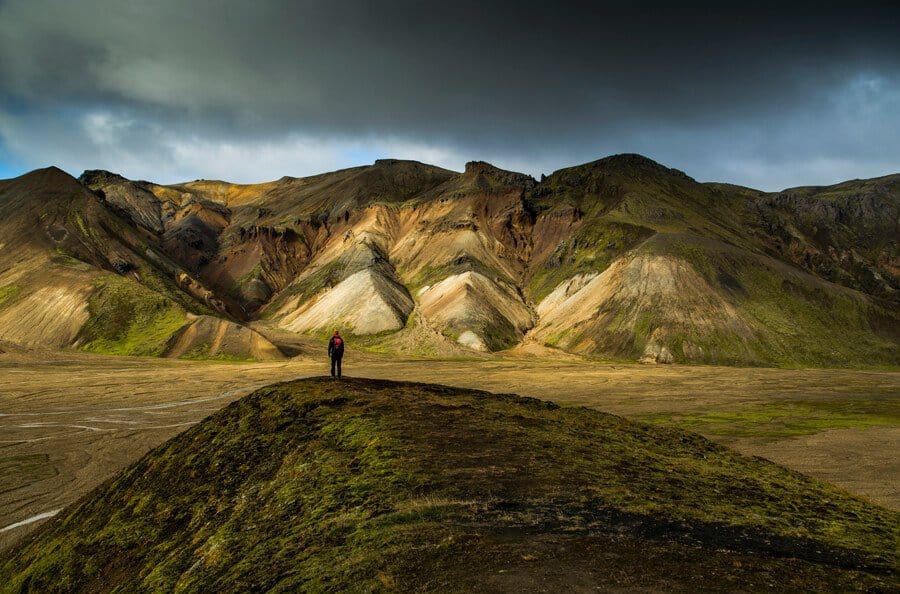
Landmannalaugar
Landmannalaugar – inviting natural geothermal pools set amid colorful rhyolite mountains, a popular tourist spot and choice bathing on the Fjallabak road northeast of the volcano Mt Hekla. The road is passable in summer, though there are winter tours.
This is part of one of the largest geothermal areas in the country, the Torfi Glacier area. Landmannalaugar is justly famed for its natural beauty, with its red rocks that include the black of obsidian and other minerals.
Brennisteinsalda

Brennisteinsalda is an extremely colorful mountain rising 855 m in Landmannalaugar. Brimstone forms the mass of the mountain, while the sides are green with moss. Lava and ash add blue and black and the red comes from the iron in the soil. A path for hikers, Laugavegurinn, passes by the mountain.
In front of the mountain lies the obsidian lava field of Laugahraun, left by an explosion during the Sulphur Age. Thousands of hikers walk by the mountain each year as they traverse the Laugavegur path, though only a few actually climb the mountain. The way up is not difficult, but it is best to ascend the ridge northwest of the mountains. Follow the scree straight up from there and then along the ridge to the top.
The name of the mountain, meaning “Brimstone wave” is obvious when climbing it. A colorful geothermal area surrounds Brennisteinsalda. Small hot springs babble and hiss here and there on its surface, emitting the smell of Sulphur.
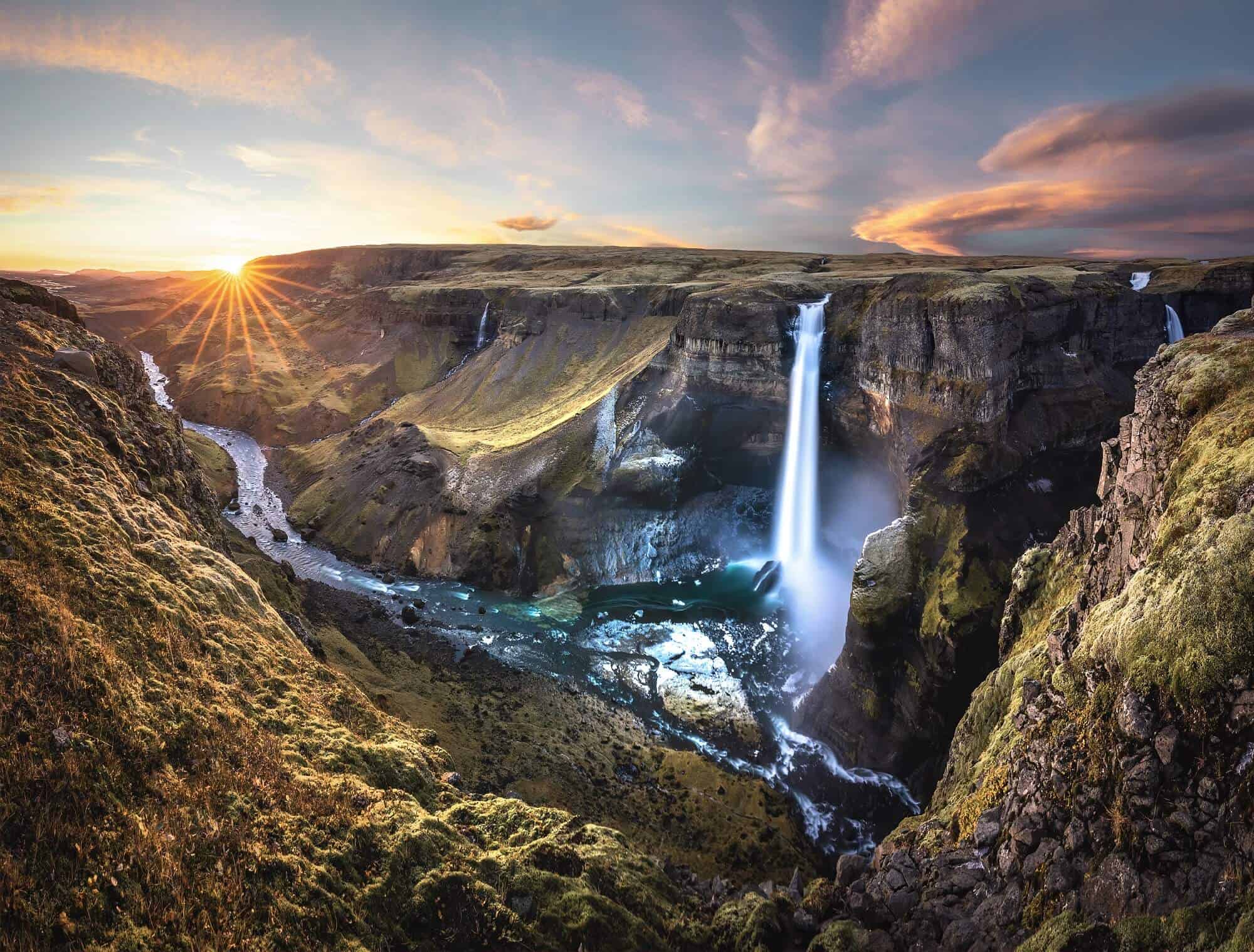
Great destinations in the Icelandic highlands
If you are looking for adventures places to visit in the Icelandic highlands we recommend the following. Click on their names to get further information.
- Landmannalaugar
- Háifoss
- Eldgjá
- Our sister property: Hrauneyjar Highland Center and Hotel

Great tours that explore the Icelandic Highlands
Contact our concierge today to book you a tour to the Icelandic highlands.

